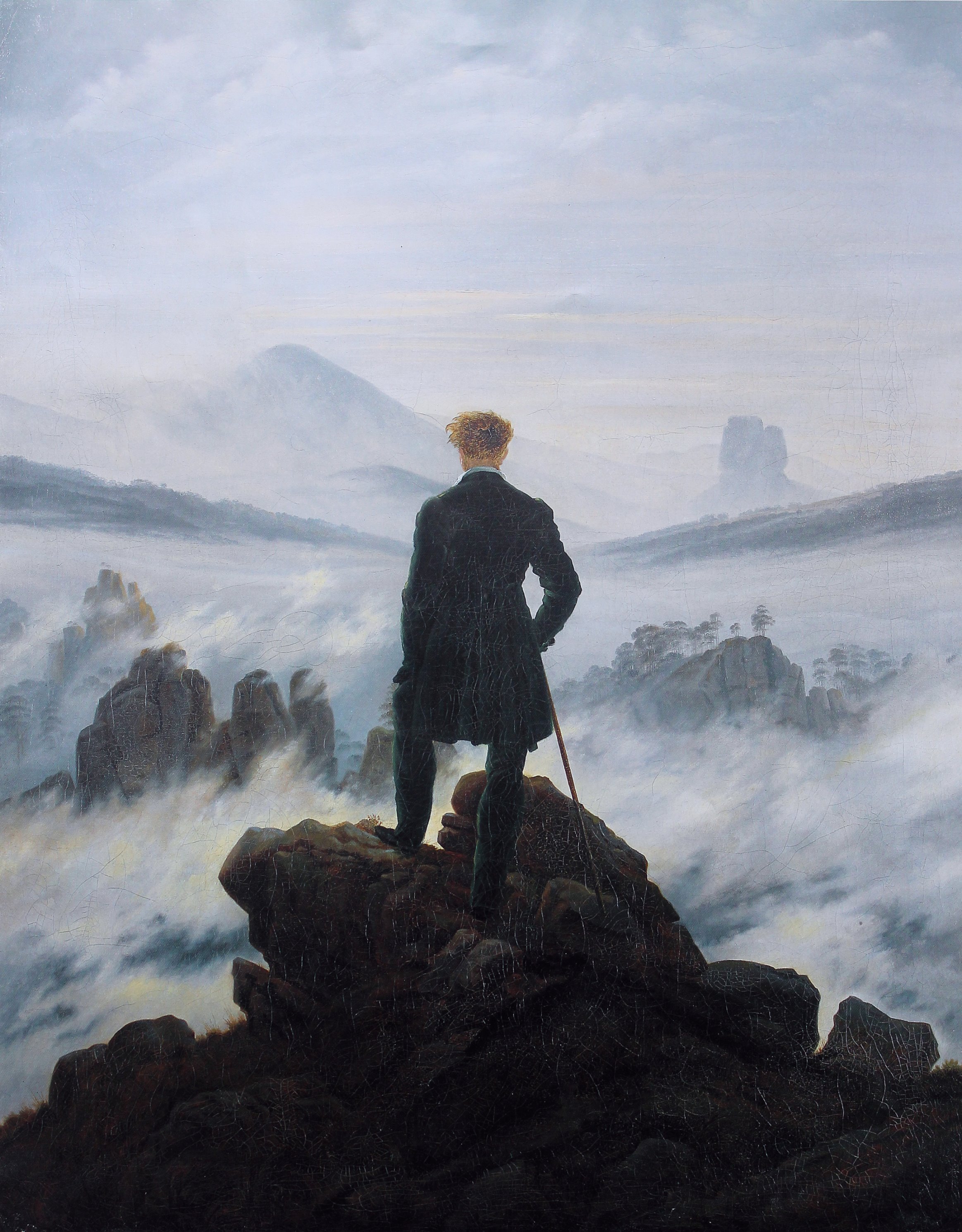Romantic ideals were the basis for most works of art created in the late Eighteenth century to the mid Nineteenth century. Music, literature, and other forms of artworks alike that were created at this time (from 1780 to 1830) all seem to share traits of the Five I’s of Romanticism: intuition, imagination, individualism, inspiration, and idealism. Romanticism with its emphasis on imagination and emotion, was a popular movement that swept through just about every country of Europe, Latin America, and the United States, lasting from 1750 to 1870. It heavily influenced the hearts and minds of the Populace of the time.
My research led me to the abstract painting, “Wanderer above the Sea of Fog“, painted by Artist Caspar David Friedrich in 1818. The painting can honestly captivate the mind while peering at it from a couple different perspectives, some may examine the man in the picture as standing on a sea shore, and others may visualize the man depicted gazing over the cliff of a mountain.
The Artist Caspar David Friedrich (1774-1840) was born in Greifswald, Germany. He did not have a carefree childhood, as at an early age he had witnessed the death of his mother, sister, and his favorite brother, who all died in an ice-skating accident. Various historians and psychologists believed this impacted him greatly, and is why he was the emotional painter he will be recognized as later in life. He was known for his love of landscapes and in his early works it became evident he believed in God through nature.
The Painting “Wanderer above the Sea of Fog” is an excellent example of Romantic artwork, and illustrates the very essence of Romanticism. The man depicted in the painting is Friedrich’s himself, showing him isolated from civilization. The theme of nature is caught in the painting, using vast landscapes to symbolize the emotion of isolation and solitude. Friedrich expresses the fundamentals of Romanticism of imagination, individualism, and intuition. He uses his imagination to show the same scene that can be interpreted differently. Individualism is apparent in the painting expressing the thought of solitude, and the need for no one else. Lastly his use of intuition makes the painting effortless to comprehend the scene depicted. “Wanderer above the Sea of Fog” is a perfect example of how an art form can address the Romantic beliefs of the time. As previously stated, there were common traits that all romantic media shared, and this painting is no exception.
This artwork can help establish the critical ideas of Romanticism and really shape the viewer’s mind of the Romantic period by showing them the very practice of Romantic art as they observe the painting.
 |
| Wanderer above the sea of fog |
Sources: